How to improve Poster Production printing with HP Latex Printers

1. Overview
This document is intended for:
• Owners and operators of any HP Latex Printer, with special focus on HP Latex 300 series printers and HP Latex 500 series printers
• HP Latex Customer Support, marketing, and sales organizations
• Reseller channel partners’ sales and support teams
This document provides information about:
• Paper media considerations
• Where and how to obtain Media Presets (aka profiles) for papers
• PrintOS tools to streamline poster creation
2. Introduction to Poster Creation
HP Latex Printers can print onto a wide range of large-format paper-based media products available in the market for poster production. Paper media are available for a diverse range of print processes, including offset, aqueous inkjet, solvent inkjet, and uncoated bond paper products.
HP Latex 300 and 500 Series printers are referred to as Generation 3 (Gen 3) devices. Through all three generations of HP Latex printers, one constant has been that the ink is completely dry and cured by the time it exits the printer.
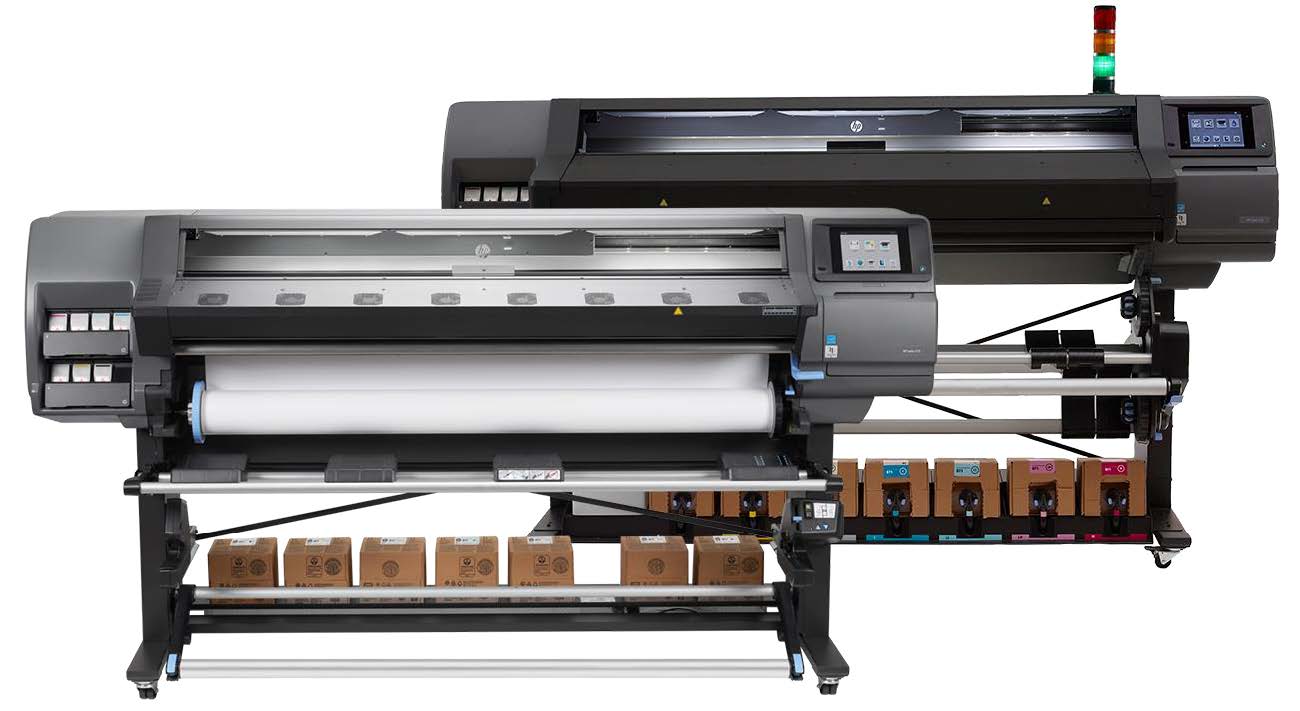
This is due to the application of thermal energy (heat energy) on the ink, causing active drying and curing, resulting in an ink film on the surface of the media. This process should be completed within the curing unit of the printer, allowing for immediate handling and finishing of posters.
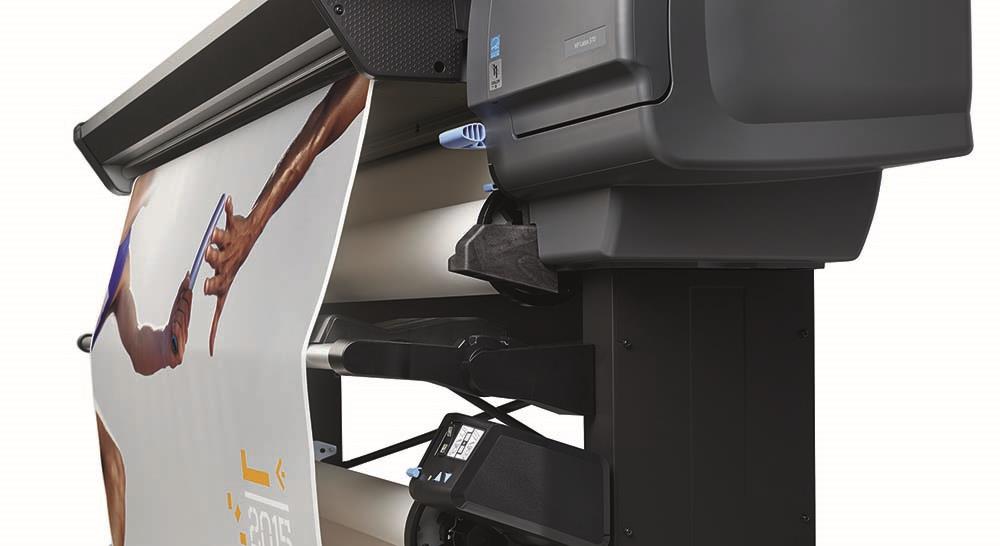
Some competitive ink chemistries rely on a “passive evaporative process” to completely dry the ink.
Examples of this may include traditional aqueous inkjet and solvent inkjet printers, where the evaporative process can take hours to complete on paper-based media.
Particularly with some solvent printers, this can preclude the use of a take-up reel due to ink smearing or transfer to the back of the paper on the take-up.
3. Paper Media for Posters
Because of the active thermal energy being applied to the ink and media in Gen 3 Latex printers, some paper-based media may not react well to thermal energy/high temperatures.
To solve this challenge, HP publishes Media Presets for literally thousands of media products that have been tested in HP Latex printers.
These have been published to the HP PrintOS Media Locator, where these Media Presets are broken into four categories:
• HP branded Media
• ColorPro Media
• Certified 3rd-Party Media
• Profiled 3rd-Party Media
Media Presets are published and available to be installed using two different approaches:
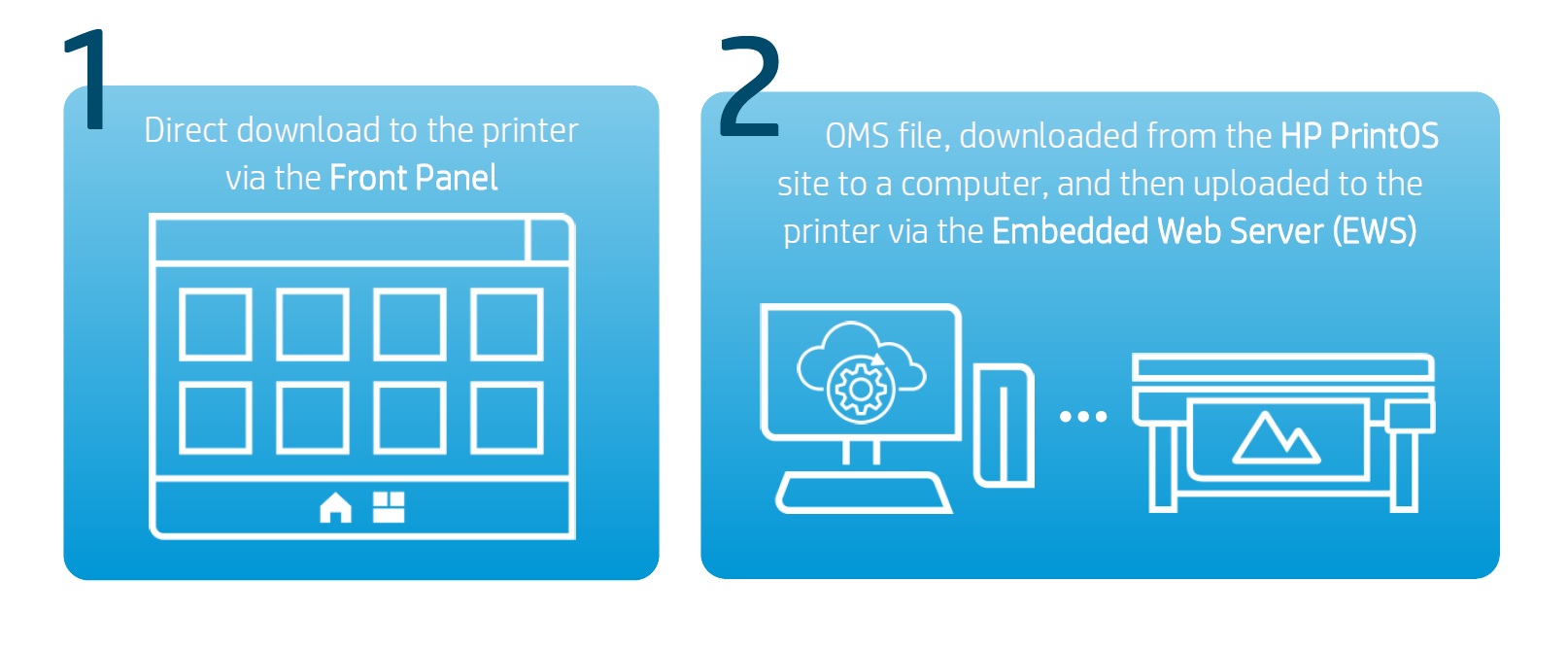
NOTE: Both approaches contain the same Media Presets.
Each of these Media Presets are available for download directly to the printer. The Media Preset controls all of the mechanical parameters required for successful print production on the referenced media.
These mechanical parameters include one or more print modes, with cure temperature settings that have been tuned to the media, and a host of additional settings, including vacuum, airflow, pass count, etc.
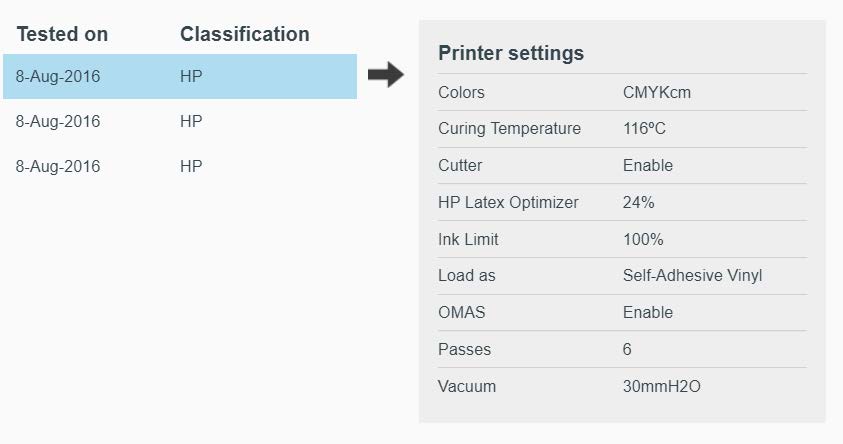
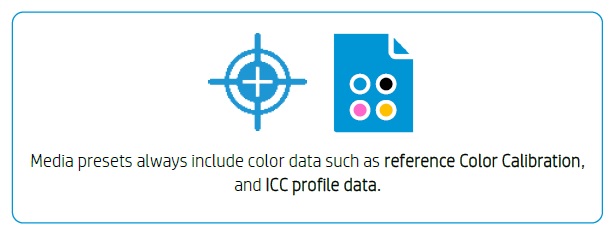
Latex media with the HP brand have been built in conjunction with HP Latex inks, to deliver an integrated system solution.
For the stated purpose of poster printing on paper-based media, and in the interest of brevity and clarity, in this document we are going to focus on two HP-branded media products for poster production:
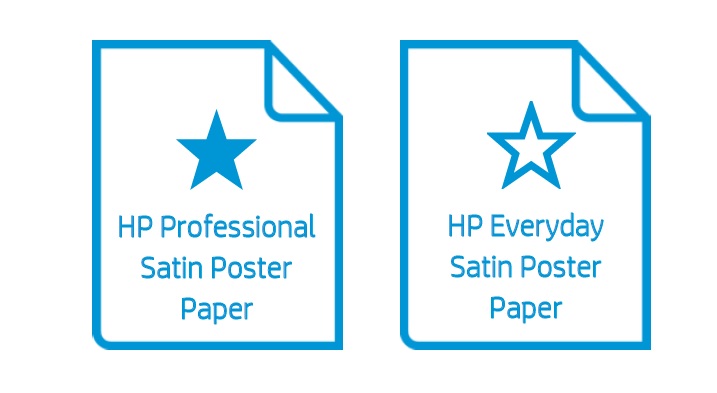
These media are made available through all authorized HP Latex reseller partners, and their Media Presets should be pre-installed into all Gen 3 printer models. If needed, they can be re-downloaded from the printer Front Panel or the PrintOS Media Locator site.
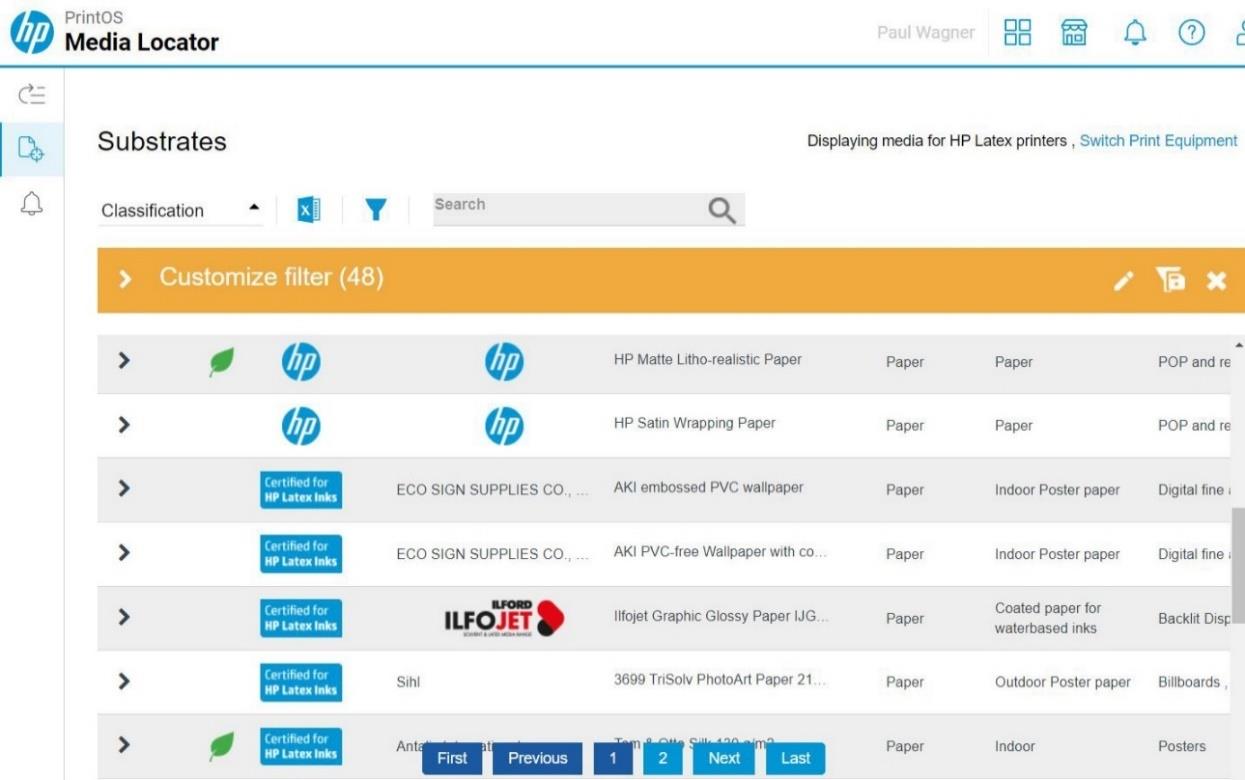
4. PrintOS Application Suite Tools
HP PrintOS is a cloud-based suite of tools that allows users to grow their print business by making job creation easier, monitoring and managing their printers, sharing data, and streamlining job production.
At present, the HP PrintOS Applications Center consists of 6 Wallart Suite application editors, 10 Signage Suite application editors, and 1 Retail Suite application editor.
One of the exciting tools that HP has recently delivered in the Applications Suite is a module on poster creation. The poster module includes a wide variety of poster sizes, plus a range of idea starter templates, objects, and shapes to help designers create attractive and functional posters in less time. Best of all, these tools are available free of charge to all HP Latex printer users.
4.1 STEP 1. Get started with HP Applications Suite
Simply open the PrintOS welcome page and sign up. You will need to enter the serial number of a qualifying HP printer as part of this process.
4.2 STEP 2. Select the Poster app
Once your account has been established, navigate to the Applications Center, then click the Posters app in either the Wallart or Signage Suite list of applications.
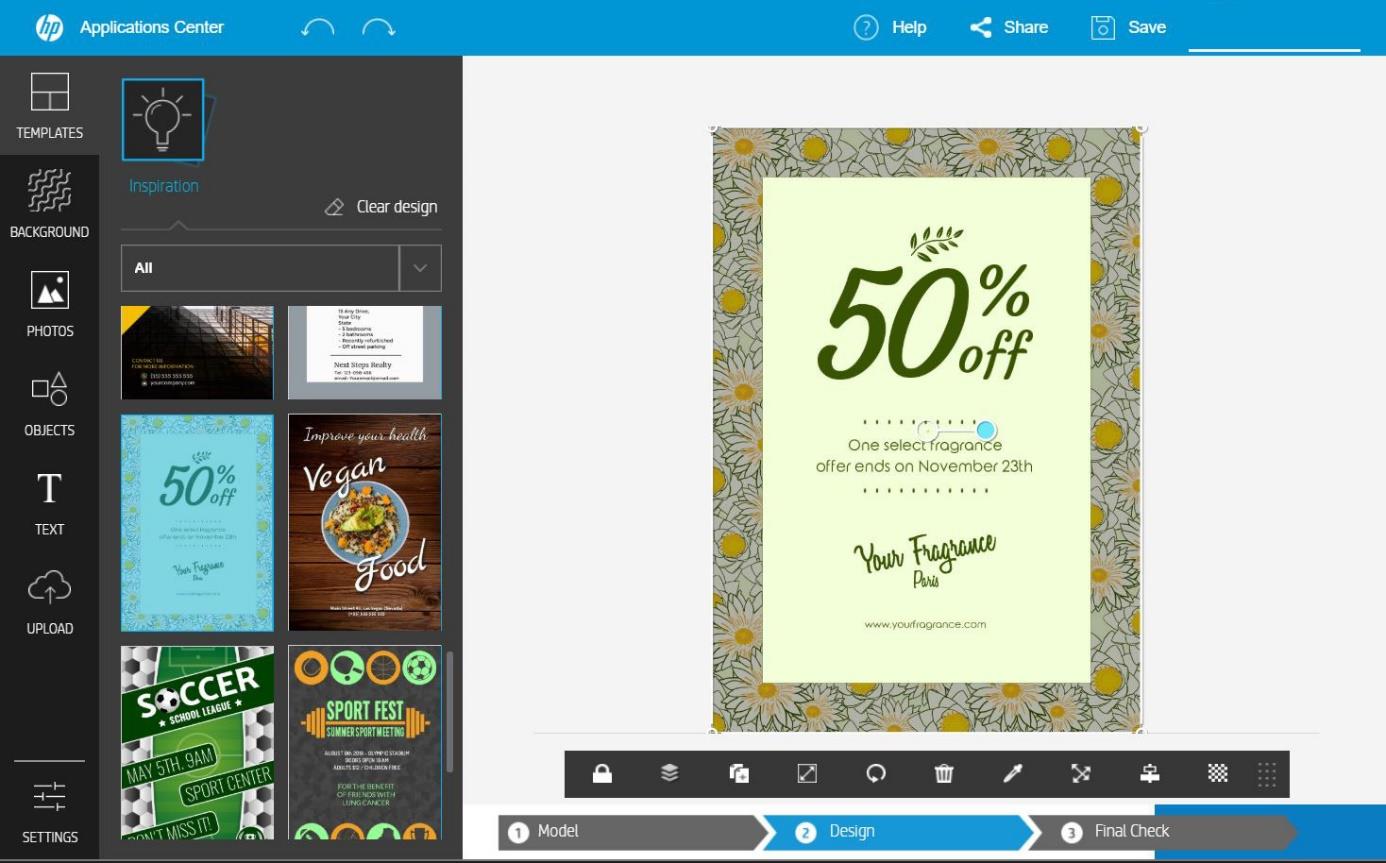
The Poster application includes a series of fully editable templates to serve as idea starters to help speed up the design process.
4.3 STEP 3. Your PDF file is ready to print
Once a file has been designed in the design editor tool, the file is generated in the cloud and you receive notification that the print-ready PDF file is available for download.
NOTE: These files are active for 30 days, after which time they move to archive status.
The PDF generated in the HP Applications Suite contains encryption to ensure that the file is output on an HP printer.
5. Printing
5.1 STEP 1. Check the Media Preset
Prior to physically loading any paper into the printer, ensure that the Media Preset is available for the paper being used.
This is done at the Front Panel by tapping Substrate Library > Paper Category and verifying that the paper appears in the list of media.
NOTE: If the paper being used does not appear in the list, it can be installed from the Front Panel (if the printer itself has internet access), or via the Media Locator site and Embedded Web Server.
5.2 STEP 2. Load the media
Paper-based media can be loaded using either the Auto Load or Assisted Manual Load technique. This is because papers are generally dimensionally stable and can be pushed into and through the media path without difficulty.
HP Latex 300 and 500 Series printers offer the operator two options for loading media:
• Auto Load
• Assisted Manual Load
Both options work well with paper media. To use the Auto Load technique, once the media have been mounted (500 Series) or loaded onto the spindle and mounted (300 Series), simply begin to feed the media into the paper path. Once the media sensor trips, the motors will begin turning to assist with media advance.
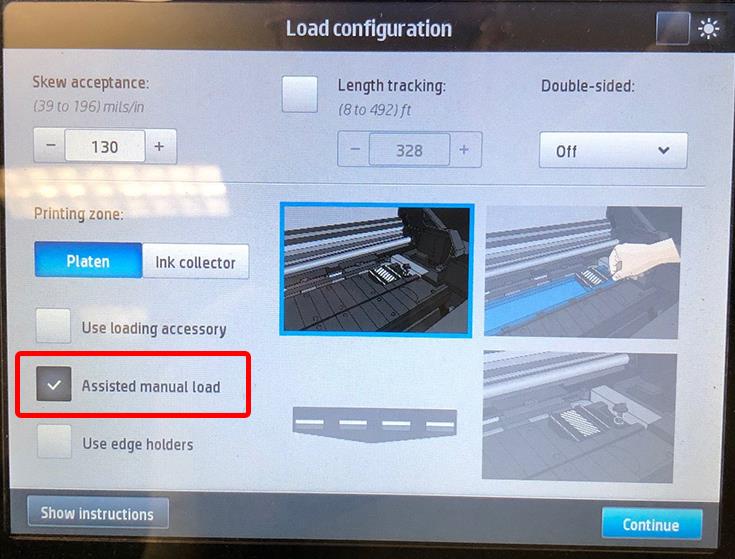 |
Assisted manual loading is activated from the Front Panel loading screen. Note that the formatting of the printer screens is slightly different across different HP Latex printer models with different size Front Panels. This screen represents the layout used on the 365 and 500 Series printers.
Once the checkbox for Assisted Manual Load has been enabled, tap Continue, and follow the prompts to manually load the banner media as prompted on the Front Panel. Advance the media until the leading edge has passed through the curing unit. |
Next, the printer will prompt you to define a media category and media product. After choosing the media name, the printer will check for skew (lateral movement of the media), then automatically check the media width and perform media advance calibration (300 and 500 series) before coming to a ready state.
After the printer comes to a ready state, the operator can manually advance or retract the media from the Front Panel by tapping Substrate > Move > [direction].
6. Printing
Printing to HP Latex printers is performed using RIP software, rather than through driver-based workflows. The 3x5 Series HP Latex printers ship with RIP software from SAI. The 500 Series printers do not include RIP software. HP certifies a wide range of RIPs from ONYX, Caldera, SAI, Colorgate, Ergosoft, and others. While other RIPs may support HP Latex printers, their complete compatibility has not been verified by HP.
HP bundles versions of the SAI RIP software in Latex 3x5 Series printers. When the HP Flexi Basic RIP is used to drive the printer, the job file must be created using third-party design software. Widely used design software titles include Adobe Photoshop, Adobe InDesign, Adobe Illustrator, CorelDRAW and PhotoPAINT, Inkscape, and Affinity Designer. The other option for creating print-ready PDF files is to use the HP Applications Center tools. RIPs commonly support a wide range of file formats, including TIF, JPG, PDF, and EPS files among others.
The following image shows the Layout Tab of Job Properties in the SAI Production Manager RIP. On this tab are located a range of tools that relate to where, how large, and how many copies of the job will be output, with an accurate preview of the layout on the right side of the dialog.
Clicking Send will process the print job and send it to the printer.
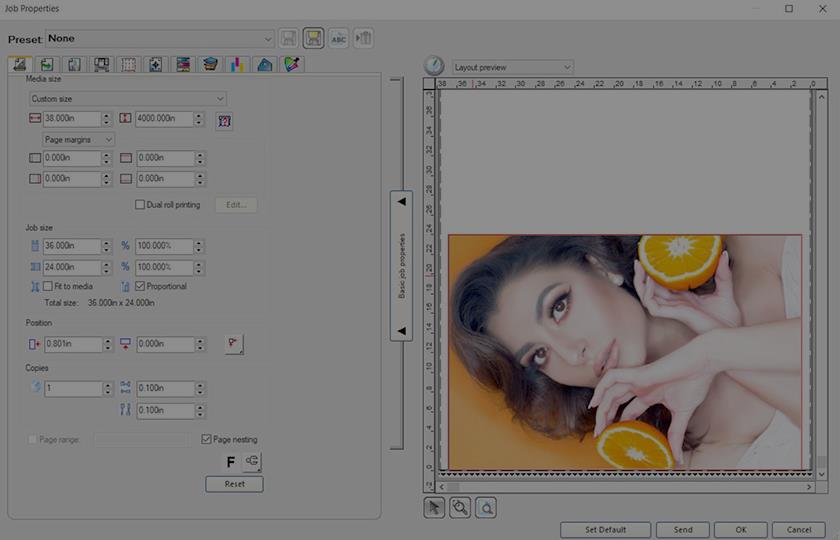
7. Finishing
After printing, posters generally require trimming to their finished size. While the 300 Series printers include an X-cut function to separate the print from the remaining roll of media, this is not a finish cut. Once the print has been separated from the roll, finish cuts are the next step.
Many users use a straight or rotary blade for these cuts, along with a long straight edge or ruler. Other popular poster finishing tools include rotary trimmers from companies like Keencut, Dahle, Rotatrim, Neolt, and more.
High volume poster producers can automate this process by using a flatbed or Fotoba x-cutting system. This type of tool can accurately trim hundreds of finished posters in minutes without user intervention, but the justification for this type of investment is limited to high production runs typically consisting of full rolls of posters.
8. Useful links
You can find templates to use at HP Application Center.
- Open the Poster app at www.hpapplicationscenter.com.
- Select the “Templates” tab from the left-hand navigation bar.
- For editable business continuity and general hygienic themed templates, select your interest from the drop-down box.
- For official sources, health advice posters, select “COVID-19 Health Advice”.
- For illustrations to create your own poster, select the “Objects” tab on the left, and choose “COVID-19”.
PrintOS Media Locator:
• https://www.printos.com/ml/#/homeMediaLocator
Further information:
• http://www.hp.com/supportvideos
• http://www.youtube.com/HPSupportAdvanced
Paper-Specific Videos:
• https://youtu.be/KSfiHX8HhO4
• https://youtu.be/UUyfl7Oyon0
• https://youtu.be/7icz5_hYEYg
• https://youtu.be/i_eqchPM5Hs





















